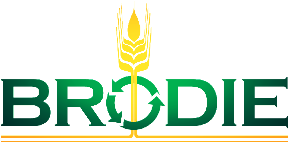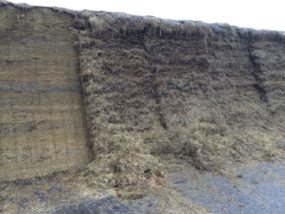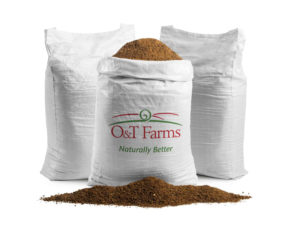
It will include both national and international renowned speakers – including former Wal-Mart Canada CEO, Mario Pilozzi – workshops, exhibits, cheese reception and a gala banquet.
The symposium will be held March 25-27 at the DoubleTree by Hilton Hotel in Toronto, Ontario. For more information, click here or click here to e-mail.
Read on to learn about the workshops slated for the afternoon of March 26.
Putting Some Backbone in Your Succession Planning
Len Davies, Davies Legacy Planning Group, Inc.
Mike Bossy, Bossy Nagy Geoffrey (BNG)
Why is this topic important?
DAVIES: Farms are increasing in value and it is getting more and more difficult to settle the issue of estate fairness when it comes to dealing with non-farm children.
Non-farm children are taking a keener interest in their inheritance so parents have to be conscious of this and be prepared to deal with this issue while alive.
Farm children on the other hand need to know where they stand and how their sweat equity is dealt with.
Succession is the transfer of management, growth, ownership and control, in that order. By starting a plan early parents can become leaders giving their farm successor the direction to turn them into good managers.
If they do not plan early enough they may have successors not qualified or debt too high to have a feasible transfer.
Successors must know the financials of the business in order to make decisions. That may not mean doing the books but it does mean analyzing the results and recognizing what the key financial ratios are for their farm business.
Without a written plan, succession plans are only wishes and not commitments.
What do you hope attendees will take away from this presentation?
DAVIES: I would hope they take away:
- Ideas on how to deal with and minimize their fears and concerns.
- They need a written plan
- The importance of a common vision
- The fact that a good succession plan has a business plan component to it
- A succession plan is not just the parents’ problem; it is a family commitment to address all facets of succession
- Succession planning is a journey and is not just the change of the name on the deed of the property.
- Transfer management first followed by growth, then by ownership of some form.
Successful Calf Management
Michael Ballou, Texas Tech University
Ken Leslie, University of Guelph
Why is this topic important?
BALLOU: Dairy calves are extremely susceptible to disease during the first few months of life and the nutrition of the calf during those months can improve their immunity and can have long-term impacts on the performance and health of the animal throughout life.
LESLIE: My component will focus on monitoring and prevention of respiratory disease in dairy calves. This topic is very important for dairy producers because of recent evidence that this disease has profound impacts on multiple outcome measures for a dairy herd.
To be specific, respiratory disease in the post-weaning period of a dairy replacement heifer has a measurable biological and economic impact on her growth, age at first breeding, age at first calving, survival to first calving, calving ease at first calving, and milk production in first lactation.
A spreadsheet has been developed to measure the economic losses due to respiratory disease in calves for a typical dairy herd.
These losses are substantial. Methods that can have an impact on the occurrence of respiratory disease in dairy calves will be discussed in detail.
What do you hope attendees will take away from this presentation?
BALLOU: The attendees will understand why calves are so susceptible to disease and practical nutritional strategies to improve a calf’s immunity against various microorganisms.
LESLIE: It is anticipated that participants in this workshop will take away an appreciation for new methods to monitor the occurrence of respiratory disease in the replacement heifer calves in their herds.
In addition, it is hoped that participants will take away an understanding of various possible approaches to reduce the occurrence of this problem, including ventilation, nutrition, vaccination and preventive therapy.
Robotic Barn Design Solutions
Jack Rodenburg, DairyLogix
Nico Vreeburg, Vetvice
Why is this topic important?
RODENBURG: The workshop on robotic barn design solutions is important to anyone considering renovations or new barn construction for robotic milking, and that seems to include a lot of Canadian dairymen this winter.
Based on producer intentions and sales projections, the number of robotic milking herds is going to double from roughly 75 to 80 to more than 150 in Ontario alone this year.
Because this is a totally different way of milking cows, producers making the switch need to have a good grasp of about a dozen design principles that are completely different from what we traditionally do in parlour barns.
In the past year the number of companies offering robotic milking equipment has also doubled, and in some cases these systems need a different approach to barn layout than the currently popular Lely and DeLaval options.
What do you hope attendees will take away from this presentation?
RODENBURG: Hopefully attendees will take away new insight into layout features that will facilitate frequent voluntary visits by all cows, as well as convenient handling and layouts that result in low stress for cows and low labour and low stress for producers.
Coping with Repro and Butter Fat Challenges during Heat Stress
Matt Lucy, University of Missouri
Gordie Jones, Central Sands Dairy
Why is this topic important?
JONES: All cows suffer heat stress, even in Canada! Cows start heat stress above 20°C or 68°F. When heat stress occurs, both milk production and reproduction performance suffers.
LUCY: Dairy cows are sensitive to heat stress during the summer and fertility decreases in the summer. I cannot find data on Canadian dairy cows (I will keep looking), but it is true for cows in Minnesota and New York so I assume that it is true for cows in Ontario.
As Jones points out, it does not require a very high environmental temperature to cause problems in the cow.
The reason cows are susceptible to heat stress is because the high feed intake and metabolism that goes with high milk production generates a lot of heat.
Heifers, for example, are much less sensitive. As milk production per cow increases over time via genetic selection, the situation will only get worse.
The other issue that makes this a timely topic is global warming (according to Environment Canada, this is an upward trend).
I think it is okay to argue whether people are causing the world to warm up, but the bottom line is that the world is warming up and this will make heat stress a growing problem for dairy cows.
What do you hope attendees will take away from this presentation?
JONES: Attendees should understand what simple measures dairymen can do to help with heat stress.
LUCY: Infertility in the summer is inversely correlated with the body temperature of the cow. The first step in all of this is to provide a cool, comfortable environment for the cow.
This includes freestalls, loafing areas, holding pens and milking parlours. The principles of environmental modification have not changed much in the past 50 years.
Solar radiation is bad news, moving air via fans helps a lot, and fans plus sprinklers (evaporative cooling) seems to be the best option right now when conditions are extreme.
Heat stress causes a lot of damage before the cow ovulates, so figuring out a way to clean out those damaged eggs after the summer and getting the cow back on track is one thing that people are working on.
After ovulation, it seems that it is the early embryo that is most sensitive to heat stress. This is because the early embryo has not initiated gene expression and has no way to defend itself from the heat stress.
Older embryos (6 to 7 days old) can handle heat stress better, so doing embryo transfer during the summer will give you more pregnant cows.
The problem, of course, is that good quality embyros are expensive. An inexpensive source of embryos would help a lot and give guys some options. PD
-- From PDO news release








